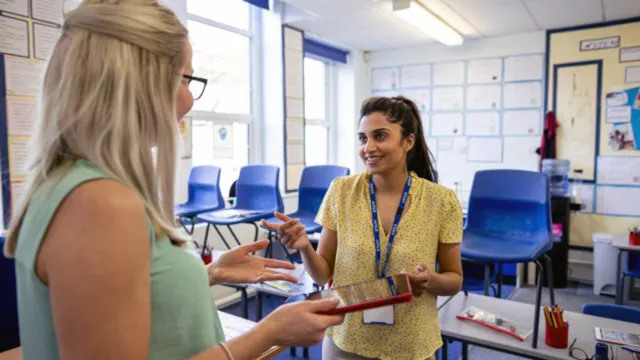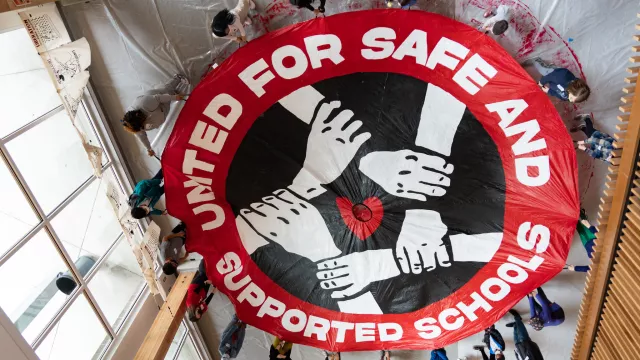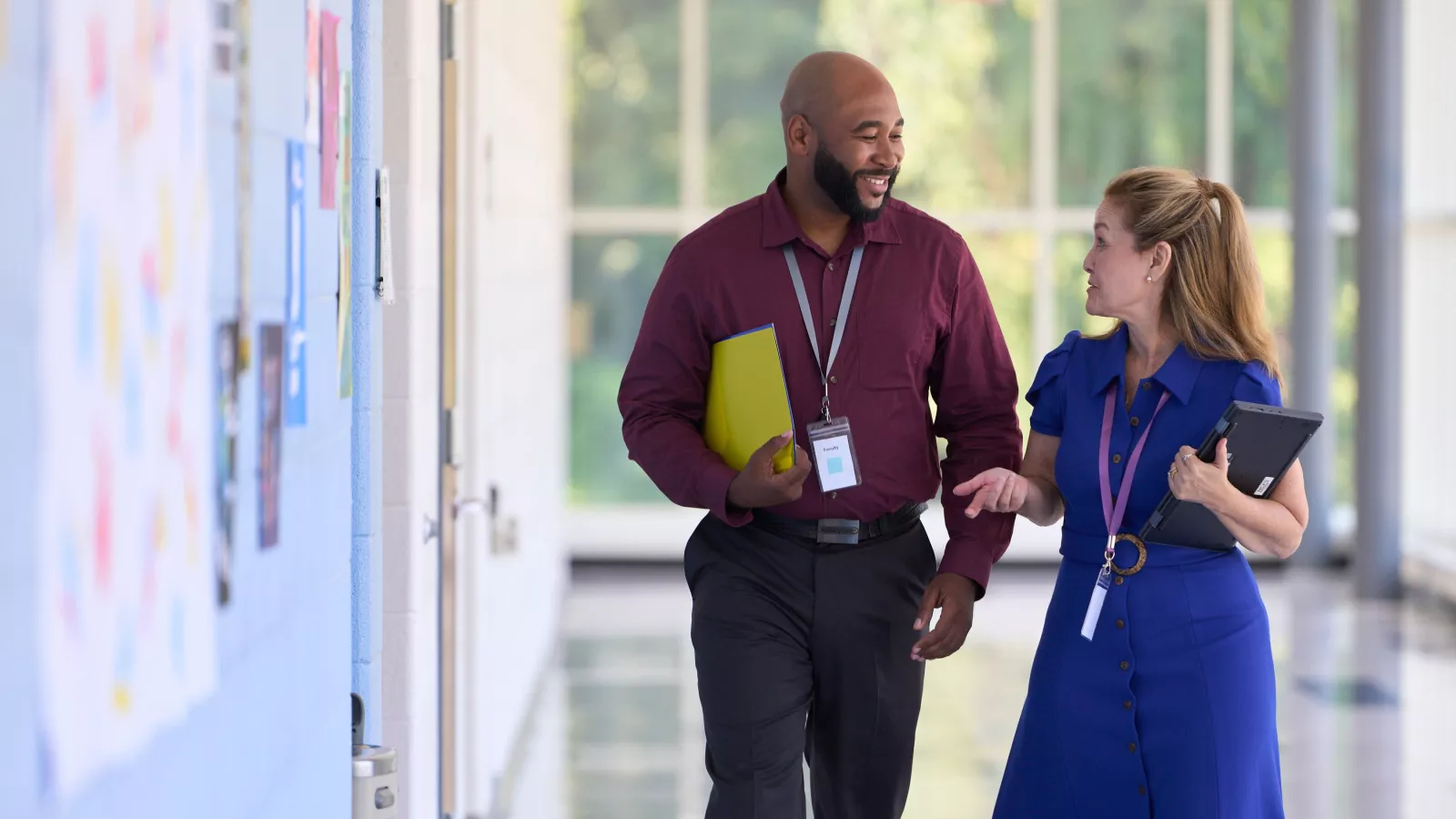Introduction
About the Strategies
NEA's Year-Round Organizing Framework centers around key field strategies that naturally flow through each of the four seasonal components of a typical school year. Each campaign builds on the momentum of each other, helping members and staff work together to grow our union and create the change our public schools need.
If our union members engage educators around the five key field strategies throughout the year, we will activate more member leaders to grow our union’s membership and increase member engagement.
This guide will explore each of the field strategies and provide criteria to assess your Affiliate’s strengths and weaknesses, so that you can create the strongest organizing program possible.
Key Strategies Self-Assessment
The Local Affiliate Key Strategies Self-Assessment was designed to assist local membership organizing teams in identifying areas of strength and opportunity in their year-round organizing campaigns.
Consider using your results to assess local needs around the five key strategies and implement plans that build a framework for a year-round organizing strategy focused on membership growth.
The Self-Assessment describes three possible levels for each component:
- Level 101 – Foundational: Understands processes and strategies for member recruitment, engagement, and retention.
- Level 201 – Mobilizing & Power-Building: Develops imaginative recruitment and retention strategies that continue to grow the Association’s diverse membership and influence others to become more actively involved in the recruitment and engagement process.
- Level 301 – Agenda-Driving: Influences all members to own the agenda of the Association through their active participation and attitude towards collective action.
Note: It is likely locals will have a range of ratings, depending on strengths and challenges. For example, a Local Affiliate may assess themselves at the 101: Foundational level in one area, but as 301: Agenda-Driving in another area.
Key Strategy 1: Acquire Employee Lists
Key Strategy 1: Acquire Employee Lists
Improve the processes and policies related to acquiring employee lists. Better list acquisition practices allow state affiliates to assess their member density and target their organizing resources.
Need Data Support?
Building strong lists allows organizers to more effectively and efficiently reach educators and protect public schools. Don't let the process of gathering data intimidate you! We've broken down the basics for you in our guide to building strong organizing lists. If you need further support, contact contact NEA at [email protected].
Strategy 1 Self-Assessment
- The Affiliate does not request unit lists from District.
- Member and potential member lists are kept predominantly at the building level and are not shared with the State Affiliate.
- The Affiliate has inconsistent procedures for requesting, securing, cleaning, and processing lists into a state-designated database (e.g. VAN or NEA360).
- Building-level or local-level leaders know the potential members but are not tracking trends.
- Potential member lists include only information to be able to contact potential members at work.
- The Affiliate asks for lists once a year from District, and potential member lists are given to all Building Representatives.
- List acquisition is a past practice but not formalized as part of contract language and/or school board policy.
- Active efforts to formalize list acquisition are happening through bargaining or district policy.
- The lists obtained by the Affiliate have some contact information to contact potential members outside of work locations.
- List is accessible to Union/Association leadership only and may not be in a format that is user-friendly.
- The Affiliate receives employee lists for all locals as new employees are hired.
- List acquisition is part of the Affiliate’s contract language, state legislation, and/or school board policy.
- The Local Affiliate works with the State Affiliate to reach out to former Aspiring Educators members and do a strategic ask.
- Procedures for requesting, securing, cleaning, and processing lists into a state-designated database (e.g. VAN or NEA360) are in place and happen at a regular interval throughout the year.
- Lists are accessible, in a user-friendly format, to key stakeholders (e.g. building representatives, membership chairs, Member Organizers, etc.).
- The Local Affiliate has a designated person responsible for implementing the procedures listed above (i.e. membership chair).
- All Local Affiliates work with the State Affiliate to ensure that the state also has an accurate bargaining unit list with potentials.
- The lists obtained by the Affiliate has personal contact information, including personal phone number, address, and personal email.
Key Strategy 2: Engage All New Hires Throughout the Year
Key Strategy 2: Engage All New Hires Throughout the Year
Engage with new hires, potential members, and current members before orientation and year-round. Reaching out before the orientation and year-round allows local leaders and building reps to initiate one-on-one conversations that establish the Association as a trusted resource.
Organize Worksite Visits
Worksite visits are great ways to have one-on-one organizing conversations with as many members and potential members as possible. Use this guide to make the most of your time, whether you are making a solo visit or hosting a worksite blitz.
Key Strategy 2: Self-Assessment
- First contact with new hires by the Affiliate occurs at or after NEO.
- The Local Affiliate does not receive new hire lists prior to NEO.
- The Local Affiliate has not yet prioritized resources for pre-orientation engagement activities.
- There is limited engagement or outreach by President or ECEs prior to orientation.
- Some Building Representatives are trained on the 1:1 curriculum and involved in reaching out to new hires.
- Some outreach to new hires occurs prior to orientation, but it is not systematic or sustained.
- Limited resources are available for pre-orientation engagement or are not utilized in a systematic way for all new hires.
- Some engagement events and 1:1s include a membership ask and tracking (Year-Round Organizing data) of the contact in VAN/NEA360.
- The Affiliate has a plan for engaging new hires through multiple contacts (3-7) between the date of hire and orientation.
- All Building Representatives receive standardized training on the 1:1 curriculum and new hire recruitment before the start of the school year.
- The Local Affiliate utilizes support from the State Affiliate to engage Aspiring Educators (student members) and other graduating seniors at schools of education at hiring events.
- Majority of Building Representatives and a diverse group of Worksite Activists are actively involved in reaching out to incoming new hires and ECEs.
- All engagement events and 1:1s include a membership ask and tracking (Year-Round Organizing data) of the contact in VAN/NEA360.
- The Affiliate has dedicated resources to conduct pre-orientation engagements.
Key Strategy 3: Make a Membership Ask at Every Event
Key Strategy 3: Make a Membership Ask at Every Event
Create a local plan to make a membership ask to every new employee at New Employee Orientation and any other Association led event. Make a game plan that helps your Building Representatives and worksite leaders approach, recruit, and follow up with potential members throughout the year.
The activities below were developed focused on NEOs. In a Year-Round Organizing Framework these same activities should be considered for all Association-led events to ensure a membership ask is made at every event.
Recruitment Guide
Our Recruitment Guide shares tips and tools for making membership asks online and at events. Find videos, graphics, and downloadable posters to help you spread the word about your membership drive.
Key Strategy 3: Self-Assessment
- The Affiliate attempts to track the number of new hires before orientation day.
- Building Representatives and worksite leaders from some worksites are present at the NEO/Association event.
- UniServ staff and local leaders lead the planning and execution of NEOs.
- No training is provided to ECEs, Building Representatives, and local leaders who volunteer for NEOs.
- The Affiliate has a presence at the NEO, but no time on the district agenda.
- Limited 1:1 organizing follow-ups occur at the NEO.
- The Affiliate does not keep up or prioritize several NEOs throughout the year. (Including ESP & adjunct faculty, if applicable).
- The Affiliate has a limited system in place to assess NEO results and reconcile data to determine new members, identified potential members from YRO surveys, and new hires who have not been engaged yet.
- The Affiliate has a system to track and engage new employees in all classifications.
- Building Representatives and worksite leaders from most worksites are present at the NEO.
- Local leaders and Building Representatives lead the planning and execution of NEOs.
- Limited NEO training is provided to ECEs, Building Representatives, and local leaders who volunteer for NEOs.
- The Local Affiliate has a presence at NEOs and makes a transactional presentation and membership ask to the new employee cohort.
- Intentional 1:1 organizing follow-ups occur at the NEO.
- The Affiliate leads on several NEOs scheduled throughout the year. (Including ESP & adjunct faculty, if applicable).
- The Affiliate has a limited system in place to assess NEO results and reconcile data to determine new members, identified potential members from YRO surveys, and new hires who have not been engaged yet.
- Every Affiliate-led event includes a membership ask.
- Building Representatives and worksite leaders from all worksites are present at the NEO.
- Local leaders, Building Representatives, and ECEs lead the planning and execution of NEOs.
- A comprehensive NEO training is provided to ECEs, Building Representatives, and local leaders who volunteer before the NEO day.
- ECEs and worksite leaders plan and deliver aspirational New Hire Orientations that are budgeted, adequately resourced, scheduled, and publicized by the Affiliate.
- Worksite leaders execute 1:1 organizing follow-ups with all new employees at the NEO.
- The Affiliate leads on all NEOs scheduled throughout the year. (Including ESP & adjunct faculty, if applicable).
- The Affiliate has a comprehensive system in place to assess NEO results and reconcile data to determine new members, identified potential members from YRO surveys, and new hires who have not been engaged yet.
- In the absence of a district-run orientation, the union holds their own NEO for all new hires.
- Community organizations partner with the Affiliate on events to offer support to new hires.
Key Strategy 4: Organize Follow-Up One-on-One Conversations
Key Strategy 4: Organize Follow-Up One-on-One Conversations
Focus on in-person follow-up conversations. Members are the most effective recruiters of new members. A strong follow-up plan supports Building Representatives and Worksite Activists in having targeted one-on-one organizing conversations with new and potential members at the worksite immediately following NEOs and other Association led events.
Have Transformative Conversations
When members speak about how their local makes a difference in their own work, community, and personal lives, they are an influential force in building power in the union. This guide will help you start recruitment conversations and navigate those questions while highlighting all that NEA has to offer at the local, state and national level.
Key Strategy 4: Self-Assessment
- The Affiliate has a system to support, engage, and recruit most new employees hired at the beginning of the year.
- The Affiliate has an incomplete or fractured Building Representative structure.
- The Affiliate does not have assessment of worksite density.
- Follow-up conversations occur but are not tracked by the Affiliate.
- No collaboration between the Local Affiliate and the State Affiliate to train building reps to execute and track follow-up conversations and membership asks.
- The Affiliate has an inconsistent system to support, engage, and recruit most new employees hired throughout the year.
- The Affiliate has an adequate Building Representative to member ratio (e.g. 1:10).
- The Affiliate supports some Building Representatives in having strategic follow-up conversations with all potential and new hires using the Year-Round Organizing data.
- The Affiliate has a process for giving state affiliate YRO survey data that includes frequent conversations, but it is not always smooth or followed with fidelity.
- The Affiliate has assessment of worksite density for some classifications and worksites, but not all.
- In worksites that do not have identified Building Representatives, the Affiliate attempts to identify a pathway for new leader engagement, especially for ECEs.
- The Affiliate tracks some follow-up conversation data.
- The Affiliate has a strategic plan to support, engage, and recruit all new employees hired throughout the year.
- The Affiliate has a strong Building Representative structure that includes a pathway for new leader engagement, especially for ECEs.
- The Affiliate supports Building Representatives, Member Organizers, and Worksite Activists with training for follow-up with all members and potential members at each worksite.
- The Affiliate provides a consistent level of support, resources, and curriculum for Building Representative trainings.
- The Affiliate supports Building Representatives in using YRO survey data to hold follow-up conversations with new hires and potential members.
- Data that is returned from the state level is used regularly at the local level.
- The Affiliate has a consistent tracking system in VAN/NEA360 for new hires in each worksite, follow-up 1:1s, and new/potential member density.
Key Strategy 5: Use Data to Plan Follow-Up Engagements
Key Strategy 5: Use Data to Plan Follow-Up Engagements
Use data to drive decision-making and resource allocation. The Year-Round Organizing survey data identifies opportunities to develop organizing campaigns, issue-specific education, and professional supports.
Follow-Up Conversation Starters
Looking for a way to start an organizing conversation with potential members? We’ve created tools and explainers about student debt, pensions, health care, and unions that you can use to introduce the benefits of membership.
Key Strategy 5: Self-Assessment
- The Local Affiliate shares Year-Round Organizing data with the State Affiliate inconsistently.
- The Local Affiliate rarely collaborates with the State Association in using YRO survey data to plan programming and engagement events across the career continuum.
- The Affiliate has no targeted turnout plan for individualized conversations that lead to high attendance at engagement events.
- The Affiliate has sign-in sheets for engagement events, but rarely enters data into a useable database (e.g. VAN or NEA360).
- The Affiliate rarely uses YRO survey data to develop organizing campaigns, issue-specific education, and professional supports.
- The Affiliate rarely incorporates an aspirational membership ask in their engagement events.
- The Local Affiliate collaborates with the State Affiliate in using YRO survey data to plan programming and engagement events across the career continuum.
- The Affiliate has inconsistent targeted turnout plan for individualized conversations that lead to high attendance at engagement events.
- The Affiliate has sign-in sheets and/or electronic data collection methods for engagement events, but inconsistently enters data into a useable database (e.g. VAN or NEA360).
- The Affiliate inconsistently utilizes YRO survey data to develop organizing campaigns, issue-specific education, and professional supports.
- The Affiliate incorporates an aspirational membership ask in most of their engagement events.
- The Local Affiliate strategically collaborates with the State Affiliate in utilizing YRO data to plan Association programing and engagement events across the career continuum.
- The Affiliate supports all building reps and leaders in using YRO survey data to provide individualized conversations for turnout at engagement events.
- The Affiliate has sign-in sheets and/or electronic data collection methods for engagement events and consistently enters data into a useable database (e.g. VAN or NEA360).
- The Affiliate consistently uses YRO survey data to develop organizing campaigns, issue-specific education, and professional supports.
- The Affiliate incorporates an aspirational membership ask in all their engagement events.
More Organizing Resources
MORE ORGANIZING TOOLS AND RESOURCES

Conversation Guides

Year-Round Organizing Framework

NEA's Guides to Organizing
Speak Up For Students and Public Schools

